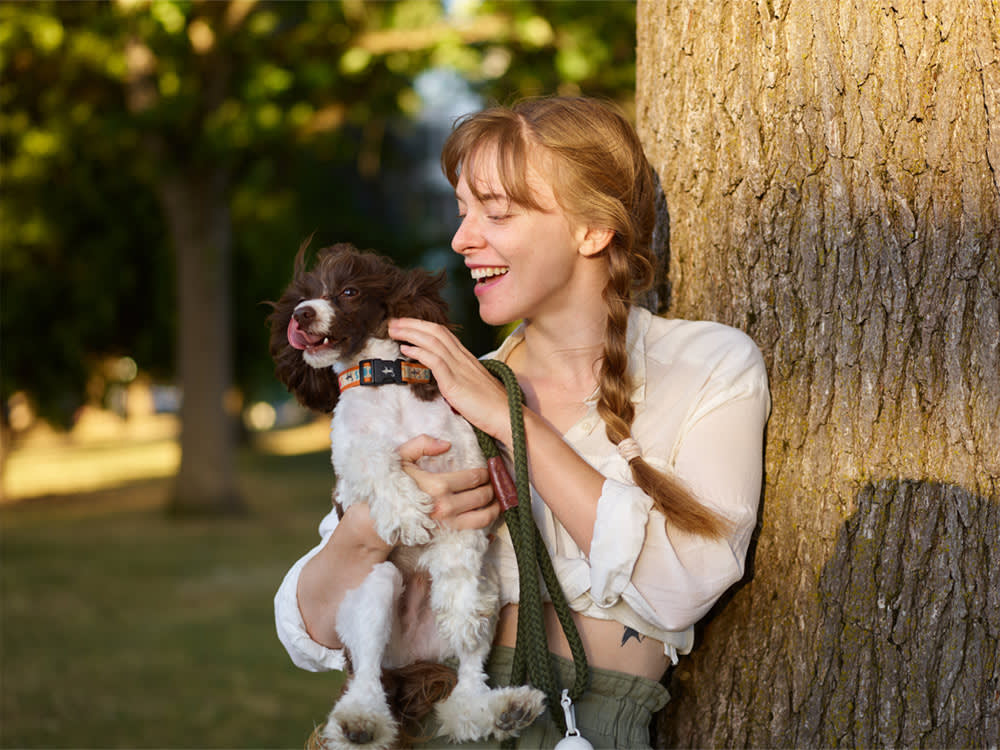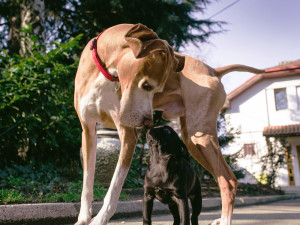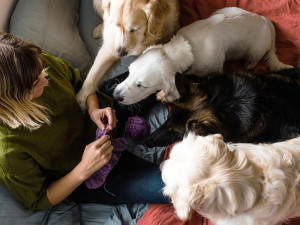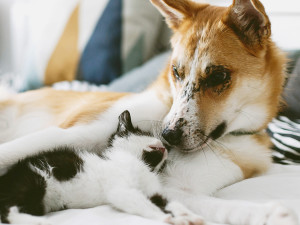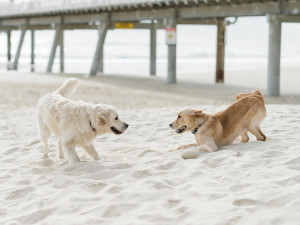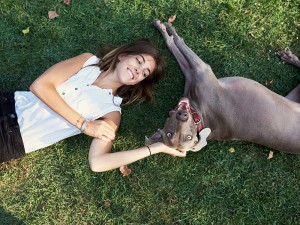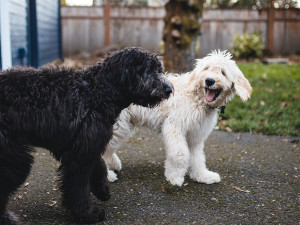How to Give Your Dogs a Break from Each Other
In multidog households, time apart can be a game changer.
“Moose doesn’t really play with toys,” his parent said as he dropped the dog off for an afternoon visit. Within an hour, that dog had played with every toy in the house and a couple of items that he thought were toys. He flapped a Wubba around at his own face and did the same with a dishtowel.
He went joyfully berserk over a squeaky toy shaped like a bone, fetched tennis balls, and tossed around a fleece fox with a dead squeaker inside. Moose was — no matter what his person said — really into toys. So, what changed?
Trick question: All dogs are perfect! But find out which type is the best fit for you.
Breaks Change Everything
Moose’s parent was genuinely surprised when told about the afternoon toy playing session. He said it was odd because, at home, all Moose did was follow his other dog, Zach, who loves to play fetch. Moose never got the balls himself. And when Zach was chewing on bones or toys, Moose just watched, no matter how many were lying around. If they specifically gave Moose a toy, Zach would come over to relieve him of it. Moose never objected, so his parent figured that Moose just didn’t have a strong interest in them.
Au contraire. If you have more than one dog, there’s a good chance that you’ll see behavioral changes when separating them. That’s because many dogs in multidog households are prevented from doing what comes naturally. If you never observe the dogs on their own, it’s hard to know that they are missing out. In Moose’s case, he was not playing with toys or chewing on bones with Zach around, even though he loves them. (It’s almost a sure bet that a dog who is being “mugged” by another dog who habitually takes the bones and toys would rather maintain possession of them if possible.)
How much do you spend on your pet per year?
Benefits of Giving Dogs Time Apart
Even dogs who adore each other and are truly the best of friends benefit from some time apart. Absence makes the heart grow fonder. There are other ways a dog may benefit from being away from other dogs from time to time:
Spending time as the only dog allows them to receive undivided attention and more petting.
Young dogs can get more vigorous exercise sessions than older dogs in their home can tolerate.
Dogs who just want the peace and quiet may appreciate the opportunity that a one-dog situation bestows.
Other dogs might appreciate the chance to train or play without another dog interrupting the flow.
Many people swear that their dogs hate to be apart, but in many cases, the issue is not being apart, but being left behind. If more than one person lives in your home, it’s easier to work through this by having each person take one of the dogs to do something at the same time. If you are the only human in the family, then a good plan is to leave something fun and tasty to chew on with one dog while you go somewhere with the other dog.
If this is a challenge for your dogs, it’s a good idea to start with very short separations so that you can teach each dog to be comfortable being left alone. It’s a good skill to have in just case one dog becomes ill or injured, and you have a forced separation on your hands.
Finding Time For Individual Dogs
The opportunity to spend quality time as the only dog with their person is so valuable. A little goes a long way, so even the occasional session can be a great treat for a dog and well worth working into even the busiest of schedules.
It doesn’t have to be a lot of time; I’m not suggesting you adjust your life so that your dogs have hours of separate activities each day. Even one walk or activity a week, or a couple of separate 15-minute play sessions can go a long way. It only takes a short break to prevent small irritations from building up. Those little stresses may not be obvious to you, but dogs can still get on each other’s nerves. Most dogs adjust and there is no problem, but you can help them enjoy life just a bit more with a change of pace involving time away from each other.
